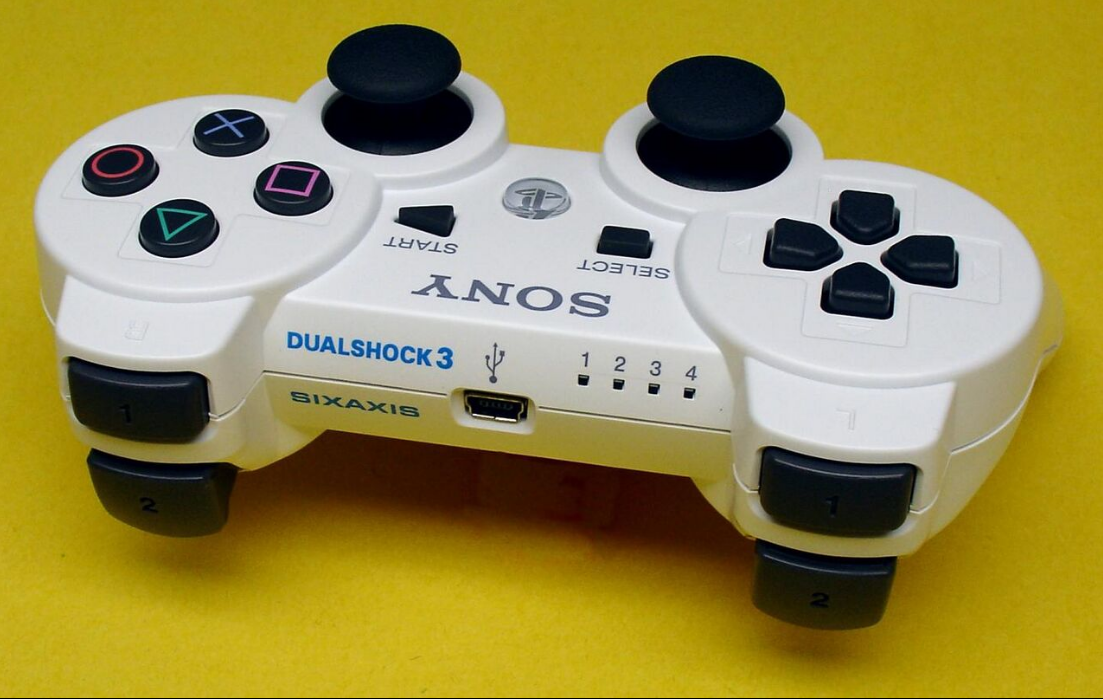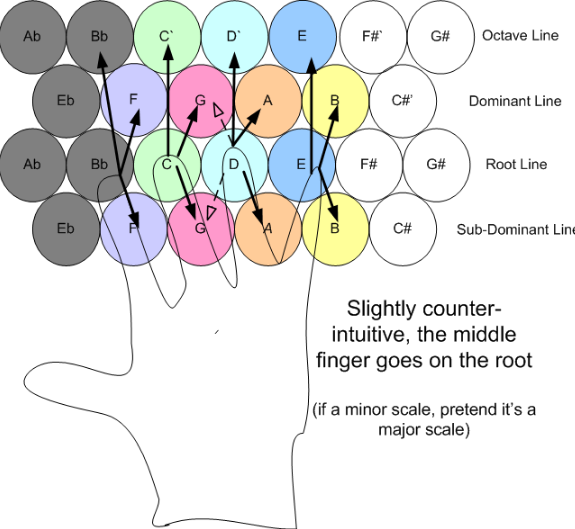
| Version | Summary | Created by | Modification | Content Size | Created at | Operation |
|---|---|---|---|---|---|---|
| 1 | Beatrix Zheng | -- | 1114 | 2022-10-20 01:48:58 |
Video Upload Options
A Thummer is a proposed commercial musical instrument characterized by The Thummer was to be a type of jammer keyboard. Research suggests that the jammer's combination of thumb-controls and internal motion sensors could give more expressive potential than other polyphonic musical instruments such as the piano, guitar, and accordion. Isomorphic keyboards similar to those used in a jammer have been shown to accelerate the rate at which students grasp otherwise-abstract concepts in music theory.
1. History
1.1. Origin of Jammer and Thummer
The jammer keyboard was invented by Jim Plamondon in September 2003, whereupon he founded Thumtronics to design its "Thummer(tm)-brand jammer" and bring it to market, the trade name was to emphasize the unique thumb-control feature. Prototype Thummers were produced, but the effort to commercialize them failed, and Thumtronics was disbanded in mid-2009.
However the concepts developed and publicized by the company are still being developed by alternate-keyboard enthusiasts.
1.2. "Jammer" Versus the "Thummer" Name
Just as Kleenex(tm) is a trademarked brand of facial tissue, and the Stratocaster(tm) is a trademarked brand of electric guitar, the Thummer was intended to be a trademarked brand of "a new kind of musical instrument." The term jammer was introduced to give that "new kind of musical instrument" a generic, non-trademarked name.
1.3. Design Goals
Thumtronics' design goals for the Thummer, which continue to influence the independent development of jammers, were the 7 "E"s:
- Easy: Facilitate the rapid acquisition of a self-sustaining level of musical competence in both composition and performance.
- Expressive: Offer more expressive potential than most musical instruments.
- Ergonomic: Place significantly less stress on its player's body than the average traditional musical instrument.
- Ergonomic: Place the keys and other controls within easy, fast reach.
- Expansive: Expand the frontiers of music-making, by (a) providing a single interface for the performance of the music of all known past and present human cultures, and (b) enabling the exploration and control of new tonalities (via effects such as Dynamic tonality).
- Everywhere: Be sufficiently portable to go everywhere, from concert hall to campfire.
- Everyone: Affordable (once in high-volume production) by people living at the First World's poverty level.
2. Features


- At least one 2-dimensional keyboard in a hexagonal array; preferably, one for each hand.
The keys of the left-hand instrument are mirror-imaged to those on the right, to match the mirroring of one's hands. - Notes assigned to the array using the Wicki/Hayden note-layout.[1]
- At least one thumb-operated expressive control (such as the thumb-operated joysticks found on seventh-generation video game controllers).
- Optionally, other expressive controls, such as internal motion-sensors (such as those found in the Wii Remote video game controller), foot-pedals, breath controllers, etc.
3. Advantages over a Standard Keyboard
The Thummer was intended to have these advantages over a piano-style keyboard
| Advantage | Reason |
|---|---|
| Simple to learn | Music intervals are mapped to the same vector: a consistent angle and spacing |
| Easy to play | only one fingering needs be learned, instead of the 24 (12 for each hand) needed for the standard keyboard |
| Fast to play | The average distance the fingers need to move is reduced by a factor of 10 or more:
|
| Greater musical intervals can be played by each hand at once | 2 octave rage in normal hand position using 4 fingers, 3-4 octaves if the thumb is used |
| More notes can be played | due to the ability to play several consonant notes at once. |
| example | a 9th, 10th 12th and 15th chord can be played easily with the hand in normal position
|
| multiple concordant notes can be played with one finger | consonant notes are placed adjacent to each other |
| Variety of novel glissandos | a glissando of fourths, fifths and major seconds are easily played |
| Separate expressiveness controls for each hand | Allows twice the choice of expressive options, e.g. Sustain pedal |
| Capable of more sounds than a traditional keyboard | has two keyboards which each can be assigned to a separate instrument
|
| separate keys for flat and sharp notes | this unique feature allows more accurate, just tuning of the notes of the keyboard, as well as a host of tuning options, such as the Bohlen–Pierce scale |
| Lightweight and portable | smaller and lighter than a guitar |
4. Limitations and Disadvantages over a Standard Keyboard
- The distance between chromatic intervals is greater
- Not all chord inversions are easy to finger
- Some reviewers believe chromatic scales are harder to play
- Harder to learn than the piano in C major
- No teachers or body of pedagogy
- Fingering techniques are still being developed
- No formal theory of play has been developed, although one is under development, and related to standard jazz "jamming" techniques.
- High cost of hexagonal keyboards relative to the standard keyboard (given current sales volumes)
4.1. Design Rationale
Of the large number of isomorphic note assignments possible, the Thummer's Wicki-Hayden format was chosen since all notes of the major and minor scales fall under the fingers and the relative simplicity of relating it to conventional music notation.

All chords found in conventional chord progressions (I, ii, iii, IV, V, vi and viii, as well as others), in most inversions, can be easily played in the jammer arrangement with minimal hand movement.
This layout also places the octaves ascending vertically, increasing the notes playable at once, easing chord inversions and greatly reducing the time needed to move to a new note.
5. Ergonomic Factors
No one became expert on a Thummer, however Fitts law {link} predicts that the jammer will be very significantly faster to play that a conventional keyboard. The expected playing speed is (log base 2 (30% smaller key / ~1000% distance decrease), or about 75% less to time find and press an average key.
6. Commercially Available
Some isomorphic keyboards are commercially available, including:
- AXIS-64, uses the Harmonic Table note-layout
- The Stagi Hayden Duet Concertina uses the Wicki-Hayden note-layout (known as the 'Hayden' layout by concertina players), it may only be available second-hand.
7. Software
- Wicki.org.uk, free UK site containing Java, Flash, and PC applications to enable users to play their alpha-numeric keyboard to sound 12 equal tempered pitches using Wicki/Hayden or Jankó keyboard layout.
References
- Milne, Andrew; Sethares, W.A.; Plamondon, J. (March 2008). "Tuning Continua and Keyboard Layouts". Journal of Mathematics and Music 2 (1): 1–19. doi:10.1080/17459730701828677. https://dx.doi.org/10.1080%2F17459730701828677




